Reigning in the Big Cat Crisis in Texas
This bill needs your support so that big cats can no longer be bred for lives of exploitation and misery in Texas.
Texas residents! Please send a quick and easy letter to your Reps today to Support HB 1015
A bill like this could have saved Dolly the Mountain Lion
| 83R3908 KKR-F | ||
| By: Guillen | H.B. No. 1015 | |
| relating to the regulation of big cats and nonhuman primates; | ||
| providing penalties. | ||
| BE IT ENACTED BY THE LEGISLATURE OF THE STATE OF TEXAS: | ||
| SECTION 1. Section 822.116, Health and Safety Code, is | ||
| amended by adding Subsection (c) to read as follows: | ||
| (c) Notwithstanding Subsection (b), a county or | ||
| municipality subject to Subchapter F as provided by Section 822.152 | ||
| may not adopt an ordinance or order pertaining to big cats or | ||
| nonhuman primates that is inconsistent with Subchapter F. | ||
| SECTION 2. Chapter 822, Health and Safety Code, is amended | ||
| by adding Subchapter F to read as follows: | ||
| SUBCHAPTER F. REGULATION OF BIG CATS AND NONHUMAN PRIMATES IN | ||
| CERTAIN COUNTIES AND MUNICIPALITIES | ||
| Sec. 822.151. DEFINITIONS. In this subchapter: | ||
| (1) “Animal control authority” means a municipal or | ||
| county animal control office with authority over the area in which a | ||
| big cat or nonhuman primate is kept or the county sheriff in an area | ||
| that does not have an animal control office. | ||
| (2) “Animal shelter” means a municipal or county | ||
| animal shelter or an animal shelter operated by a nonprofit | ||
| charitable organization established primarily to shelter and care | ||
| for stray and abandoned animals and to prevent cruelty to animals. | ||
| (3) “Big cat” means: | ||
| (A) a cheetah; | ||
| (B) a cougar; | ||
| (C) a leopard; | ||
| (D) a lion; | ||
| (E) a jaguar; | ||
| (F) a tiger; or | ||
| (G) a hybrid of an animal listed in Paragraphs | ||
| (A)-(F). | ||
| (4) “Circus” means an exhibitor holding a valid Class | ||
| C license issued under the Animal Welfare Act (7 U.S.C. Section 2131 | ||
| et seq.) that: | ||
| (A) is temporarily in this state for less than 90 | ||
| days in any year; | ||
| (B) regularly conducts performances featuring | ||
| live big cats or nonhuman primates and multiple trained human | ||
| entertainers, including clowns and acrobats; and | ||
| (C) does not allow a member of the public to come | ||
| in direct contact with or to be in proximity to, including for a | ||
| photographic purpose, a big cat or nonhuman primate without | ||
| ensuring there is sufficient distance between the animal and the | ||
| public member and providing protective barriers to separate the | ||
| animal from the public member. | ||
| (5) “Commercial activity” means: | ||
| (A) an activity involving an animal conducted by | ||
| a person for profit; | ||
| (B) an animal exhibition activity for which a fee | ||
| is charged; or | ||
| (C) the sale, trade, auction, lease, or loan of | ||
| an animal or an animal’s body parts. | ||
| (6) “Nonhuman primate” means all species of primates, | ||
| excluding humans. | ||
| (7) “Owner” means any person who owns, harbors, or has | ||
| custody or control of a big cat or nonhuman primate. | ||
| (8) “Person” means an individual, partnership, | ||
| corporation, trust, estate, joint stock company, foundation, or | ||
| association of individuals. | ||
| (9) “Wildlife sanctuary” means a charitable | ||
| organization exempt from taxation under Section 501(c)(3), | ||
| Internal Revenue Code of 1986, and described under Section | ||
| 170(b)(1)(A)(vi), Internal Revenue Code of 1986, that: | ||
| (A) operates a place of refuge where an abused, | ||
| neglected, unwanted, impounded, abandoned, orphaned, or displaced | ||
| wild animal is provided care for the animal’s lifetime, is | ||
| transferred to another wildlife sanctuary, or is released back to | ||
| the animal’s natural habitat; and | ||
| (B) with respect to any animal owned by or in the | ||
| custody or control of the organization, does not: | ||
| (i) conduct any commercial activity; | ||
| (ii) breed any animal; | ||
| (iii) use a big cat or nonhuman primate for | ||
| entertainment purposes or in a traveling exhibit; or | ||
| (iv) allow a member of the public to come in | ||
| direct contact with or to be in proximity to, including for a | ||
| photographic purpose, a big cat or nonhuman primate without | ||
| ensuring there is sufficient distance between the animal and the | ||
| public member and providing protective barriers to separate the | ||
| animal from the public member. | ||
| Sec. 822.152. APPLICABILITY OF SUBCHAPTER. This subchapter | ||
| applies to a person possessing a big cat or nonhuman primate in a | ||
| county or municipality that has a population of at least 75,000. | ||
| Sec. 822.153. PROHIBITED ACTS. (a) Except as provided by | ||
| Section 822.154, a person may not own, possess, harbor, sell, | ||
| transfer, breed, or have custody or control of a big cat or nonhuman | ||
| primate. | ||
| (b) A person may not allow a member of the public to come in | ||
| direct contact with or to be in proximity to, including for a | ||
| photographic purpose, a big cat or nonhuman primate without | ||
| ensuring there is sufficient distance between the animal and the | ||
| public member and providing protective barriers to separate the | ||
| animal from the public member. | ||
| Sec. 822.154. EXEMPTIONS. (a) Section 822.153(a) does not | ||
| apply to: | ||
| (1) a county, municipality, agency of this state, or | ||
| agency of the United States or an agent or official of a county, | ||
| municipality, or agency acting in an official capacity; | ||
| (2) an institution accredited by the Association of | ||
| Zoos and Aquariums; | ||
| (3) a related facility certified by the Association of | ||
| Zoos and Aquariums that is a participant in a species survival plan | ||
| program for the breeding of species listed as threatened or | ||
| endangered pursuant to Section 4, Endangered Species Act of 1973 | ||
| (16 U.S.C. Section 1533); | ||
| (4) a research facility, as defined by Section 2(e), | ||
| Animal Welfare Act (7 U.S.C. Section 2132(e)), that is licensed by | ||
| the secretary of the United States Department of Agriculture under | ||
| that Act; | ||
| (5) a wildlife sanctuary that is verified or | ||
| accredited by the Global Federation of Animal Sanctuaries; | ||
| (6) an animal shelter that temporarily houses a big | ||
| cat or nonhuman primate seized under Section 822.157 or on the | ||
| written request of an animal control authority or a law enforcement | ||
| agency acting under the authority of this subchapter; | ||
| (7) a licensed veterinarian who is providing treatment | ||
| to a big cat or nonhuman primate; | ||
| (8) a law enforcement officer, including an animal | ||
| control officer or a county sheriff, who has possession of a big cat | ||
| or nonhuman primate for law enforcement purposes; | ||
| (9) a circus; | ||
| (10) a college or university that displays a single | ||
| big cat as a sports mascot and that: | ||
| (A) submits to the Department of State Health | ||
| Services an affidavit signed by an official of the college or | ||
| university attesting that the college or university will provide | ||
| lifetime care for the big cat in a facility that is accredited by | ||
| the Association of Zoos and Aquariums or in a wildlife sanctuary; | ||
| (B) maintains liability insurance in an amount | ||
| not less than $1 million to cover claims for injury or damage to a | ||
| person or property caused by the big cat; and | ||
| (C) began displaying a big cat as a mascot before | ||
| September 1, 2013; | ||
| (11) a television or motion picture production company | ||
| during the filming of a television or motion picture production in | ||
| this state, provided that the company: | ||
| (A) has temporary custody or control of a big cat | ||
| or nonhuman primate; and | ||
| (B) does not allow a member of the public to be in | ||
| proximity to the big cat or nonhuman primate without ensuring there | ||
| is sufficient distance between the animal and the public member and | ||
| providing protective barriers to separate the animal from the | ||
| public member; | ||
| (12) a person temporarily transporting a legally owned | ||
| big cat or nonhuman primate through this state if: | ||
| (A) the transit time is not more than 96 hours; | ||
| (B) the big cat or nonhuman primate is not | ||
| exhibited; | ||
| (C) the big cat or nonhuman primate is maintained | ||
| at all times in a species-appropriate cage or other travel | ||
| container; | ||
| (D) the owner of the big cat or nonhuman primate, | ||
| or a designated carrier or intermediate handler of the animal, | ||
| complies with all transportation standards that apply to that | ||
| animal under the Animal Welfare Act (7 U.S.C. Section 2131 et seq.); | ||
| and | ||
| (E) the owner of the big cat or nonhuman primate, | ||
| or a designated carrier or intermediate handler of the animal, | ||
| complies with all other applicable state, local, or federal laws, | ||
| including laws requiring a veterinary certificate or other permit; | ||
| or | ||
| (13) a person who lawfully possesses a big cat or | ||
| nonhuman primate before September 1, 2013, provided that: | ||
| (A) the person complies with the applicable | ||
| requirements under Subchapter E, including registration, caging, | ||
| husbandry, inspection, disposition, and notification requirements; | ||
| and | ||
| (B) the person does not acquire, by any means, | ||
| including purchase, donation, or breeding, an additional big cat or | ||
| nonhuman primate after September 1, 2013. | ||
| (b) Section 822.153(b) and the other provisions of this | ||
| subchapter concerning preventing a member of the public from coming | ||
| into direct contact with or being in proximity to an animal do not | ||
| prohibit the owner of a big cat or nonhuman primate from allowing an | ||
| employee of the owner, a licensed veterinarian, or a veterinary | ||
| student accompanying the veterinarian to come in direct contact | ||
| with or to be in proximity to the animal. | ||
| Sec. 822.155. CIVIL PENALTY. (a) A person who violates | ||
| Section 822.153 is liable to the county or municipality in which the | ||
| violation occurs for a civil penalty of not less than $200 and not | ||
| more than $2,000 for each animal with respect to which there is a | ||
| violation and for each day that a violation continues. | ||
| (b) The county or municipality in which the violation occurs | ||
| may bring an action to collect the penalty and may also recover the | ||
| reasonable costs of recovering the penalty and the reasonable | ||
| investigation costs, attorney’s fees, and expert witness fees | ||
| incurred by the county or municipality, or the animal control | ||
| authority in the county or municipality. | ||
| (c) Costs or fees recovered under Subsection (b) for the | ||
| animal control authority must be credited to the animal control | ||
| authority’s operating account. | ||
| Sec. 822.156. OFFENSE; PENALTY. (a) A person commits an | ||
| offense if the person violates Section 822.153. Each animal with | ||
| respect to which there is a violation and each day that a violation | ||
| continues is a separate offense. | ||
| (b) An offense under this section is a Class A misdemeanor. | ||
| Sec. 822.157. SEIZURE OF BIG CAT OR NONHUMAN PRIMATE. (a) A | ||
| justice court, county court, or municipal court shall: | ||
| (1) order the animal control authority to seize a big | ||
| cat or nonhuman primate and shall issue a warrant authorizing the | ||
| seizure: | ||
| (A) on the sworn complaint of any person, | ||
| including the county attorney, the city attorney, an animal control | ||
| officer, or a peace officer, that a big cat or nonhuman primate is | ||
| owned, possessed, harbored, sold, transferred, bred, or controlled | ||
| in violation of this subchapter; and | ||
| (B) on a showing of probable cause to believe | ||
| that the big cat or nonhuman primate is owned, possessed, harbored, | ||
| sold, transferred, bred, or controlled in violation of this | ||
| subchapter as stated in the complaint; and | ||
| (2) schedule a hearing to be held on a date not later | ||
| than the 10th day after the date the warrant is issued to determine: | ||
| (A) whether a violation of this subchapter has | ||
| occurred; and | ||
| (B) the final disposition of the big cat or | ||
| nonhuman primate. | ||
| (b) The officer executing the warrant shall serve written | ||
| notice of the hearing required under Subsection (a)(2) to the owner | ||
| of the big cat or nonhuman primate at the time the animal is seized. | ||
| (c) The animal control authority shall seize the big cat or | ||
| nonhuman primate and shall provide for the impoundment of the big | ||
| cat or nonhuman primate in secure and humane conditions until the | ||
| court orders the disposition of the big cat or nonhuman primate. | ||
| (d) A big cat or nonhuman primate that has been seized and | ||
| impounded shall be kept in the custody of an institution accredited | ||
| by the Association of Zoos and Aquariums, a wildlife sanctuary, or | ||
| an animal shelter until a judicial determination regarding the | ||
| disposition of the big cat or nonhuman primate is made. | ||
| (e) Subsection (d) does not preclude the animal control | ||
| authority from impounding a big cat or nonhuman primate on the | ||
| property where the animal is located at the time of the seizure | ||
| until placement under Subsection (d) is made. | ||
| Sec. 822.158. FORFEITURE OF BIG CAT OR NONHUMAN PRIMATE. | ||
| (a) A big cat or nonhuman primate that is considered forfeited by | ||
| judicial determination or is voluntarily forfeited under | ||
| Subsection (d): | ||
| (1) shall be placed by the animal control authority in | ||
| the custody of an institution accredited by the Association of Zoos | ||
| and Aquariums or a wildlife sanctuary; or | ||
| (2) may be humanely euthanized in compliance with | ||
| state and federal law if an animal control authority, after making a | ||
| reasonable effort, is unable to find an institution that is willing | ||
| and able to take custody of a forfeited big cat or nonhuman primate. | ||
| (b) The court shall assess against the owner of the seized | ||
| animal the reasonable costs of caring for the seized big cat or | ||
| nonhuman primate, including the boarding costs and medical care | ||
| costs. | ||
| (c) A judicial determination regarding the disposition of a | ||
| seized big cat or nonhuman primate under this subchapter is final | ||
| and may not be appealed. | ||
| (d) Nothing in this section shall be construed to prevent a | ||
| person from voluntarily forfeiting the big cat or nonhuman primate | ||
| to an institution accredited by the Association of Zoos and | ||
| Aquariums or a wildlife sanctuary. | ||
| (e) Voluntary forfeiture under Subsection (d) has no effect | ||
| on criminal charges brought under this subchapter. | ||
| Sec. 822.159. INJUNCTION. (a) A person who is directly | ||
| harmed or threatened with harm by a violation of this subchapter or | ||
| a failure to enforce this subchapter may sue an owner of a big cat or | ||
| nonhuman primate to enjoin a violation of this subchapter or to | ||
| enforce this subchapter. | ||
| (b) The county or municipality in which a big cat or | ||
| nonhuman primate is kept may sue an owner of the animal to enjoin a | ||
| violation of this subchapter or to enforce this subchapter. | ||
| Sec. 822.160. EFFECT OF SUBCHAPTER ON OTHER LAW. (a) This | ||
| subchapter does not prevent a county or municipality from adopting | ||
| or enforcing an ordinance, order, rule, or other legal requirement | ||
| that places additional restrictions on the ownership, possession, | ||
| harboring, sale, transfer, breeding, or custody or control of big | ||
| cats or nonhuman primates. | ||
| (b) This subchapter does not affect the applicability of any | ||
| other law, rule, order, ordinance, or other legal requirement of | ||
| this state or a political subdivision of this state. | ||
| SECTION 3. Section 822.153, Health and Safety Code, as | ||
| added by this Act, applies only to an offense committed on or after | ||
| the effective date of this Act. An offense committed before the | ||
| effective date of this Act is governed by the law in effect on the | ||
| date the offense was committed, and the former law is continued in | ||
| effect for that purpose. For purposes of this section, an offense | ||
| was committed before the effective date of this Act if any element | ||
| of the offense occurred before that date. | ||
| SECTION 4. This Act takes effect September 1, 2013. | ||
| Last Action: | 02/06/2013 H Filed |
| Caption Version: | Introduced |
| Caption Text: | Relating to the regulation of big cats and nonhuman primates; providing penalties. |
| Author: | Guillen |
| Subjects: | Animals (I0035) City Government–General (I0060) County Government–General (I0096) Safety (I0740) CONSERVATION OF WILDLIFE (S0067) |
Please let Rep. Ryan Guillen know that you agree!

Capitol Address:
Room 4N.4, Capitol
P.O. Box 2910
Austin, TX 78768
(512) 463-0416
(512) 463-1012 Fax
District Address:
Southern District Office:
100 N. FM 3167, Suite 212
Rio Grande City, TX 78582
(956) 716-4838
(956) 716-8219 (Fax)
Eastern District Office:
P.O. Box 689
131 West Main St.
Benavides, TX 78341
(361) 256-3970
Western District Office:
4735 Loma Vista Dr.
Laredo, TX 78046
(956) 794-1767
Status: In House Committee: Culture, Recreation & Tourism since 2/18/13
Contact Committee members:
Chair: Rep. Ryan Guillen
Vice Chair: Rep. Dawnna Dukes
Rep. Jimmie Don Aycock
Rep. John Kuempel
Rep. Lyle Larson
Rep. Poncho Nevárez
Rep. Wayne Smith
Carole Baskin’s letter to the Committee:
To the Honorable Representatives of the House Committee: Culture, Recreation & Tourism
Big Cat Rescue has more than 78,000 supporters world wide and 1,821 are known to be Texans. We support HB 1015 as written and ask that you pass it favorably out of committee without diluting it with amendments that will likely be suggested by those who abuse wild animals for personal gain.
As one who was born at the Lackland Air Force Base in San Antonio, TX, I hope that you will consider my reasons for asking as outlined below:
1. Texas is the third worst state in the country when it comes to killings, maulings and escapes by big cats. There is no government agency that tracks this sort of information, so we have done so via news articles since the 1990s. See chart below:
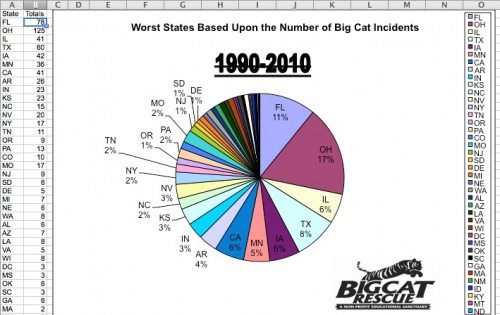
2. Texans made an attempt to reign in the big cat crisis in Texas in 2006 but as you can see from the chart, the regulations did little or nothing to address the problem:
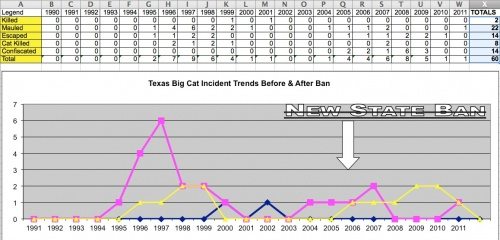
The reason is that regulations can’t solve the problem. Only an outright ban, as proposed by HB 1015 that does NOT exempt USDA licensees, or other pseudo sanctuaries or roadside zoos, can ensure a safer and more humane state. Please take the time to read about why it is impossible to regulate the private possession of dangerous wild animals.
HB 1015 already exempts legitimate accredited zoos and sanctuaries. You will probably be contacted by “zoos” that say they are accredited by the ZAA and pseudo sanctuaries that may claim a myriad of other “accreditation” but I have been involved in the exotic cat industry for 30 years and can assure you that these other affiliations are merely an attempt to appear legitimate when the “governing” bodies do not have humane standards, follow up inspections or any other real purpose than to try and band together those who believe that wild animals should be kept as pets and props. Exempting facilities, other than those that are accredited by AZA or GFAS, only opens the flood gates to incessant breeding, exploitation and dumping of unwanted big cats once they grow too large to be profitable.
3. Legislation is the only way to end the abuse and abandonment of big cats. Big Cat Rescue began tracking the number of calls that we get from people looking to unload a big cat in 1999. Every other year the number of big cats we were asked to take was doubling. It peaked in 2003 when we had to turn away 312 lions, tigers and other big cats in a single year.
In Dec 2003 a Federal bill called the Captive Wildlife Safety Act passed and the number of big cats who were being abandoned dropped to 110 the very next year. As 9 more states have passed bans and partial bans, the number of big cats who end up being abandoned each year has continued to drop. The spikes in the chart below are from huge “sanctuaries” that failed.
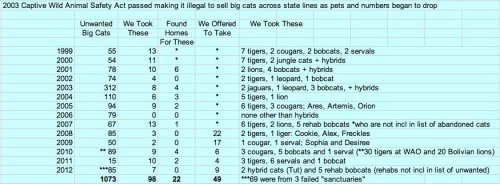
The Captive Wildlife Safety Act made it illegal to sell a big cat, across state lines, as a pet. There were a lot of parameters and exemptions were made for those with USDA licenses and “sanctuaries” that do not breed, buy, sell, trade nor allow public contact, but there was no governing body, like the Global Federation of Animal Sanctuaries, put in charge of enforcing that. If there had been, and if USDA licensees were not automatically exempted, I believe the number of big cats in peril now would have been dramatically decreased.
You are in a position to make sure that Texas has a smart law that does what it is intended to do: Protect the public and prevent inhumane conditions for dangerous captive exotic cats. Please pass it, as written, out of your committee and help champion it through the legislative process. Thank you for your time.



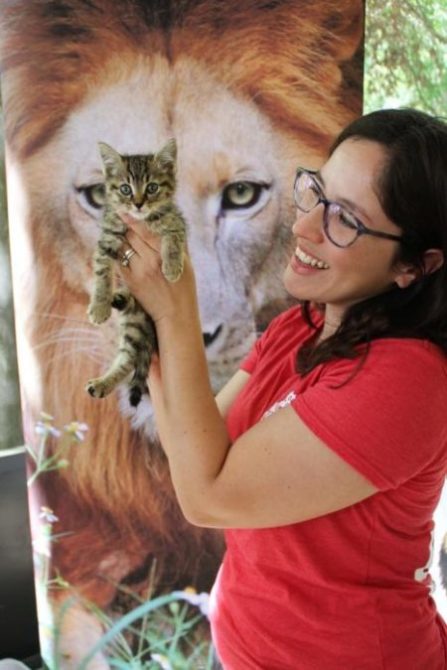
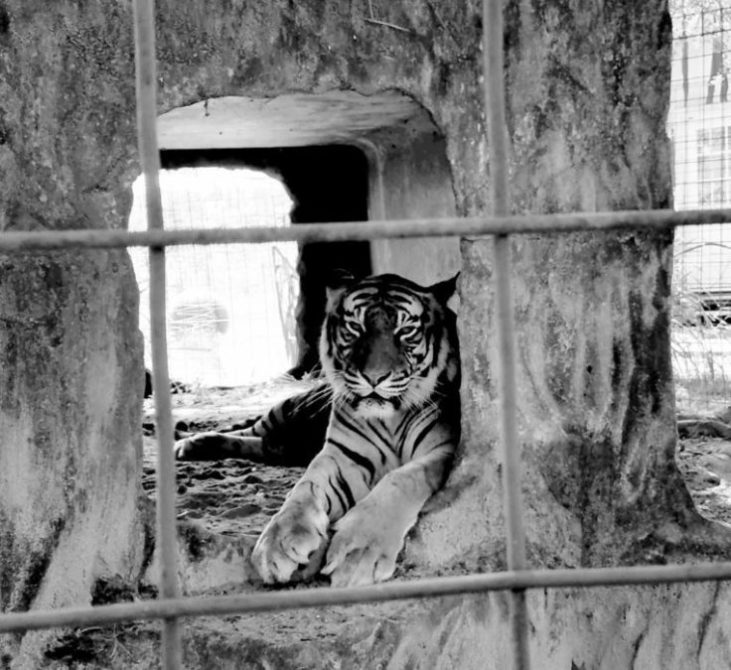
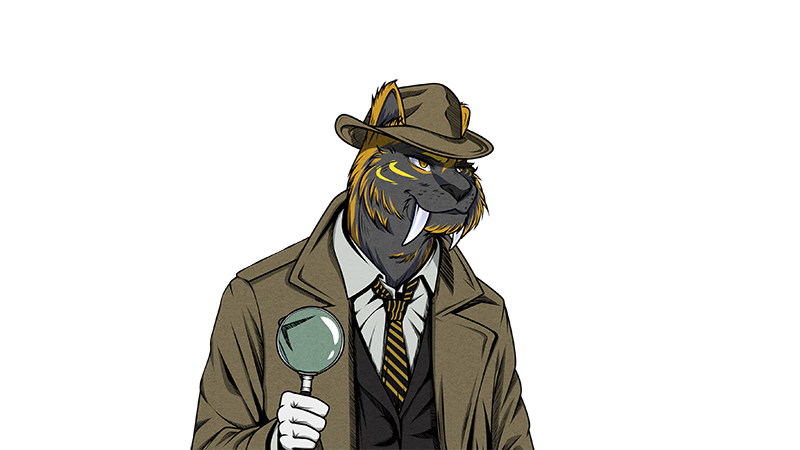
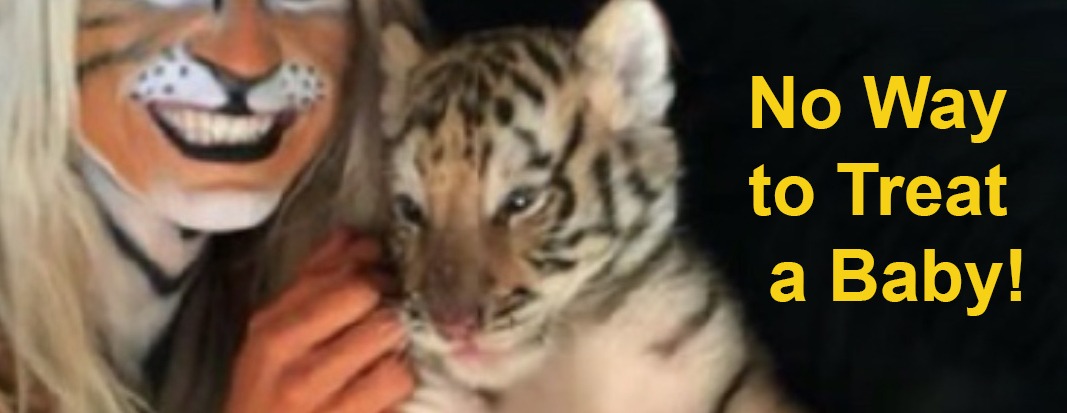
https://www.votervoice.net/link/target/bcr/g222K9i7.aspx